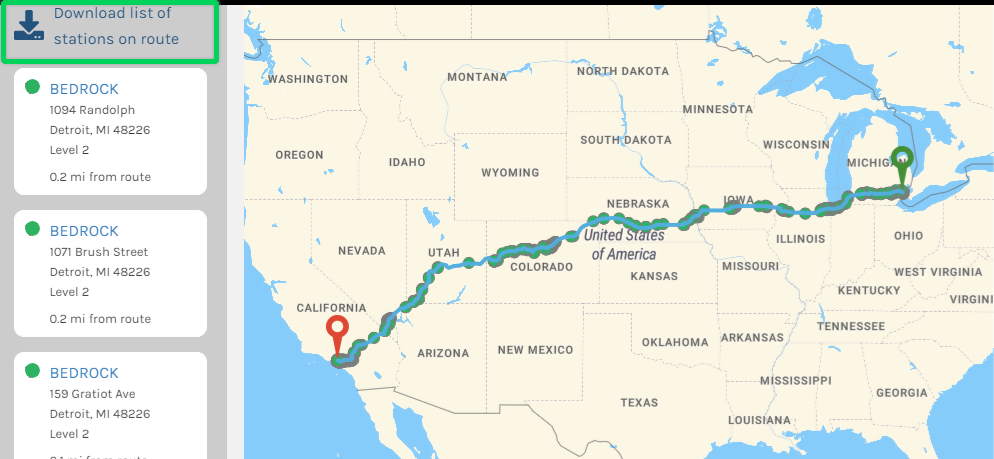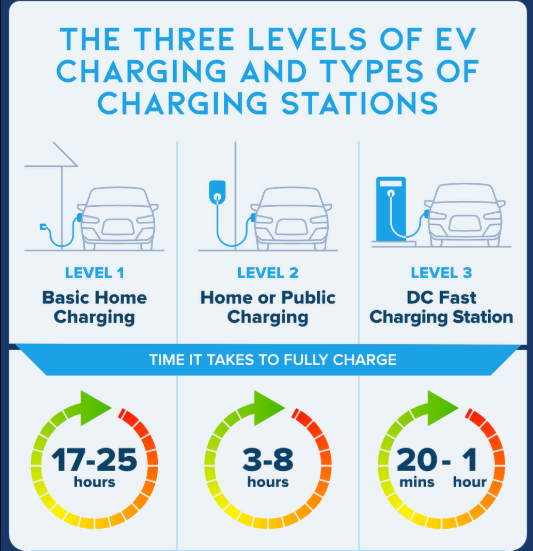We Americans love our long-distance road trips. So much so that it’s practically a rite of passage for people of every background. We’ve memorialized these adventures through literary works like Steinbeck’s Travels with Charlie and through countless films like Easy Rider and Lost in America.
Yet, today’s road-trippers are more eco-minded than ever- conscientious about the environmental toll brought about by traditional petroleum-fueled cars.
Of course, that $3.00-per-gallon gas makes the budget-minded, would-be wanderers reluctant to stray too far from home.
Lucky for them, it’s beginning to look like the wallet-draining, gasoline-fueled American road trip may soon be a thing of the past.
Enter the electric vehicle (EV)-the cars and trucks that run on powerful batteries instead of fossil fuels. While EVs aren’t a new product, they recently become affordable and popular enough to warrant massive infrastructure investments that have finally made a cross-country trip possible with an EV.
By “infrastructure,” we mean charging stations. Convenient places to plug in your electric pony and energize your ride for another 200 miles.
Are There Enough Stations to Charge My Car?
In recent years, we’ve seen an explosion in the growth of EV charging stations across the U.S.-many of which incorporate solar-powered energy. You can find them in nearly every state, across the American Heartland.
The U.S. Department of Energy maintains a handy and interactive map-based resource for finding the right charging station for your vehicle type-anywhere in the U.S.
In fact, they provide data on more than 22,000 charging stations across the nation!
Let’s look at an example.
Say you want to drive from Motown to Hollywood-perhaps as a nod to the past of The Motor City’s prized gas-guzzlers toward a future of California-based eco-cars.
Here’s what a map would look like.

See all those dots? Each one is a charging station for your EV.
Want to take a different route? No problem. Just plug in your departure and destination cities, and you’ll get a ready-to-use charging map.
How Long Does Charging Really Take?
The charging times depend on whether you charge at a friend’s house or a more advanced fast-charging station. See the infographic below for details.

So, Which EV Should I Buy?
Like any worthwhile purchase, you’ll have to make an up-front investment before you start realizing any real returns. But once you make the switch to an EV, you’ll soon understand all the ways it saves you cash while still giving you the freedom to travel the open road.
(Remember that you can still cash in on electric vehicle tax incentives.)
- Tesla Model 3 ($35,000): Model 3 is nearly half the price of other models and can hold a single charge for up to 220 miles. Tesla has the best brand-name recognition in the electric market and is known for excellent customer service. While they weren’t always the most affordable, they were always among the coolest EV options out there. And they come with all kinds of fun features like Sentry Mode and autonomous driving.
- Chevy Bolt: ($37,495): You may have heard of the Chevy Volt, but today we’re talking about the superior Chevy Bolt. The Bolt has more cargo room than the Volt, making it great for cross-country adventures. The Bolt has become one of the most popular electric vehicles on the market because it’s affordable and has a single charge capacity of more than 200 miles. The Chevy Bolt has been on the market long enough to earn a trusted reputation. It supports DC fast charging.
- 2019 Hyundai Kona Electric ($35,000): The 2019 Hyundai Kona Electric is an affordable option with a base price of $35,000. This vehicle is estimated to hold an unprecedented 258 miles on a single charge. But the batteries don’t take up all the room- you can still load up your luggage and passengers for your next Pan-American excursion. The car supports DC fast charging, which is a necessity when traveling.
Closing Thoughts
Experts predict there’s a renewable energy revolution on the horizon.
If we can learn to put political differences aside, we might just be able to reduce our negative impact on the environment.
All it takes is a few simple behavioral changes like adopting sustainable energy sources. Like wind and solar electricity to power our homes and even our electric vehicles, so we can tour this Brave New World. See the full original post on the CarRentals blog.
- Tree Facts: 42 amazing things about trees - February 8, 2022
- Importance of Microbial Contamination Analysis of Fresh Produce - December 16, 2021
- 7 Reasons Why Dinosaurs Continue Fascinating Humans - December 11, 2021

